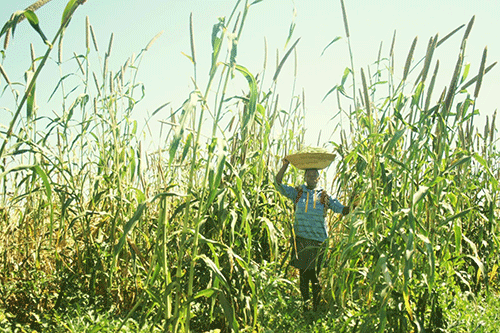Hanks Saisai
Land is one of the vital means of production that has enabled the transformation of many family agri-business ventures to be well-established agri-enterprises that enjoy sustainable profits that are shared over many generations.
Owning a piece of this precious asset, regardless of the tenure system under which it is owned, offers endless opportunities that can result in income generating endeavours, employment creation and towards food security.
However, fertile land has become a very scarce resource due to degradation from agricultural, mining, and other activities to the extent that soil has lost its natural ability to supply nutrients to plants, house micro-organisms and provide water to plants. It is, therefore, crucial that farmers utilise land effectively and implement farming practices that enhance the sustainability of the soil.
Firstly, farmers are urged to know that taking care of their soil has long term benefits for farming operations. For instance, if one introduces crop rotation on a piece of land that was only used to grow the same crop each year, this practice encourages the soil to rebuild its fertility reserves as varying crops utilise soil nutrients differently.
Secondly, farmers are urged to practice tree planting on the land as the growth of trees in the soil helps to bind soil particles on their roots leading to minimisation of soil loss due to water or wind erosion. Moreover, planting fruit trees has the added advantage of increasing the income streams of the farmer and minimises the effect of risks that the farmer’s main enterprise may face e.g. drought.
For crop farmers, it is encouraged that after four to five consecutive years of tilling the land, it is allowed to lie fallow for a year. Fallowing is a technique that allows the land to recover and restore its organic matter while retaining moisture and disrupting pest life cycles and soil-borne pathogens by temporarily removing their hosts (crops). Furthermore, it is crucial to note that, when the farmer cares for the land, the land will surely care for the farmer’s enterprises that depend on it.
Finally, it is crucial for farmers to view their land as an income-generating asset. For instance, if every farmer possesses 10 hectares of land on average, an important question to ask is, how much income can I generate on this piece of land? One needs to understand that limitations in land size do not translate to limitations in the farmer’s income.
For instance, if one grows onions on one hectare, a conservative yield of 15 000 kg may be achieved and if the onions are sold at an average farm gate price of N$ 8.20 per kg, an income of N$121 500 may be generated per
production cycle.
Another example would be that of a poultry farmer with a layer hen enterprise on 100 m2 and farms with 300 Lohman brown hens, a possible income of N$201 300 can be generated. Ultimately, it does not mean you need large tracts of land to produce, it is possible to practise intensive production to generate income and sustain your livelihood by utilising land effectively.
In conclusion, land is a valuable asset and caring for it will enable sustainable food production, income generation, employment creation and sustainable livelihoods.
Finally, land is a precondition to sustaining the existence of mankind. If you care for your land, the land will care for your livelihood.
– Hanks Saisai is Agribank’s Technical Advisor: Crops & Poultry


